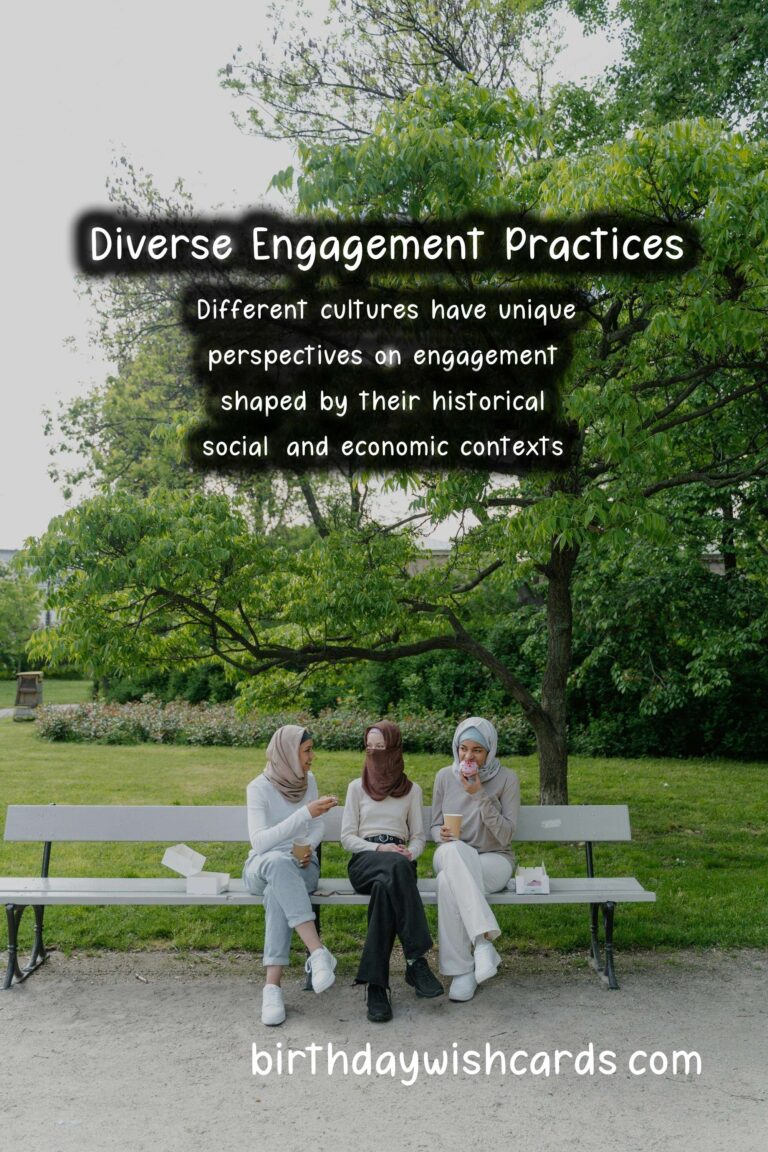
In today’s globalized world, understanding the importance of engagement across different cultures is paramount for businesses, educators, and individuals alike. This article explores how engagement varies in cultural contexts and what implications this has for effective communication and collaboration.
Understanding Engagement
Engagement can be defined as the emotional and intellectual involvement that individuals have with their surroundings, be it in personal relationships, or in professional settings. In various cultures, the methods and levels of engagement can differ significantly, influencing interpersonal dynamics and organizational success.
Cultural Perspectives on Engagement
Different cultures have unique perspectives on engagement, shaped by their historical, social, and economic contexts. For instance, collectivist cultures might prioritize group harmony and consensus, while individualistic cultures might emphasize personal expression and autonomy.
Collectivist Cultures
In collectivist cultures such as Japan, China, or many African nations, engagement often revolves around community and family ties. Here, meaningful interactions are valued more than aggressive competition. Engagement is often demonstrated through respect for hierarchy and consensus-building.
Individualistic Cultures
Conversely, in individualistic societies like the United States or Australia, personal engagement is characterized by assertiveness and direct communication. Individuals are encouraged to share their opinions openly, which can lead to creative ideas but may also cause conflicts if not managed well.
The Role of Communication
Communication is a cornerstone of engagement, and understanding how cultural nuances affect communicative styles is vital. High-context cultures, such as those in the Middle East and East Asia, rely heavily on non-verbal cues and context. Low-context cultures, like those in North America and Northern Europe, prefer explicit verbal communication.
High-Context vs. Low-Context Cultures
In high-context cultures, engagement may involve reading between the lines, understanding subtle meanings, and often requires more time to build relationships. In contrast, low-context cultures value clarity and explicitness, hence engagements may be quicker but less nuanced.
Enhancing Engagement Strategies
To effectively engage with individuals from diverse cultural backgrounds, organizations and individuals should adopt tailored engagement strategies.
Cultural Awareness Training
Implementing cultural awareness training can immensely improve interpersonal dynamics. This training can help participants understand the value systems and communication styles of different cultures, thus fostering better engagement.
Adapting Engagement Techniques
Organizations should also consider adapting their engagement techniques based on the cultural context. For instance, while brainstorming sessions may be effective in individualistic cultures, in collectivist societies, it may be more beneficial to engage in smaller, more intimate discussions that prioritize group consensus.
Case Studies: Successful Engagement Across Cultures
Examining case studies can provide insight into effective engagement across cultures.
A Tech Company in Japan
A technology company operating in Japan found success by integrating traditional Japanese values of respect and group harmony into their team dynamics. They employed practices that encouraged senior members to mentor junior staff, fostering a strong sense of belonging and loyalty.
A Startup in the U.S.
On the other hand, a startup in the U.S. thrived by promoting a culture of open feedback and personal accountability. This allowed team members to feel valued and engaged, directly influencing innovation and productivity.
Implications of Engagement on Business Success
Engagement also has significant implications for business success. Businesses with high levels of employee engagement report increased productivity, better customer satisfaction, and lower turnover rates.
Conclusion
Understanding the importance of engagement across different cultures is essential in our increasingly interconnected world. By recognizing and respecting cultural differences, individuals and organizations can foster better relationships, create inclusive environments, and ultimately succeed in achieving their goals.
Engagement can be defined as the emotional and intellectual involvement that individuals have with their surroundings. Different cultures have unique perspectives on engagement, shaped by their historical, social, and economic contexts. 













